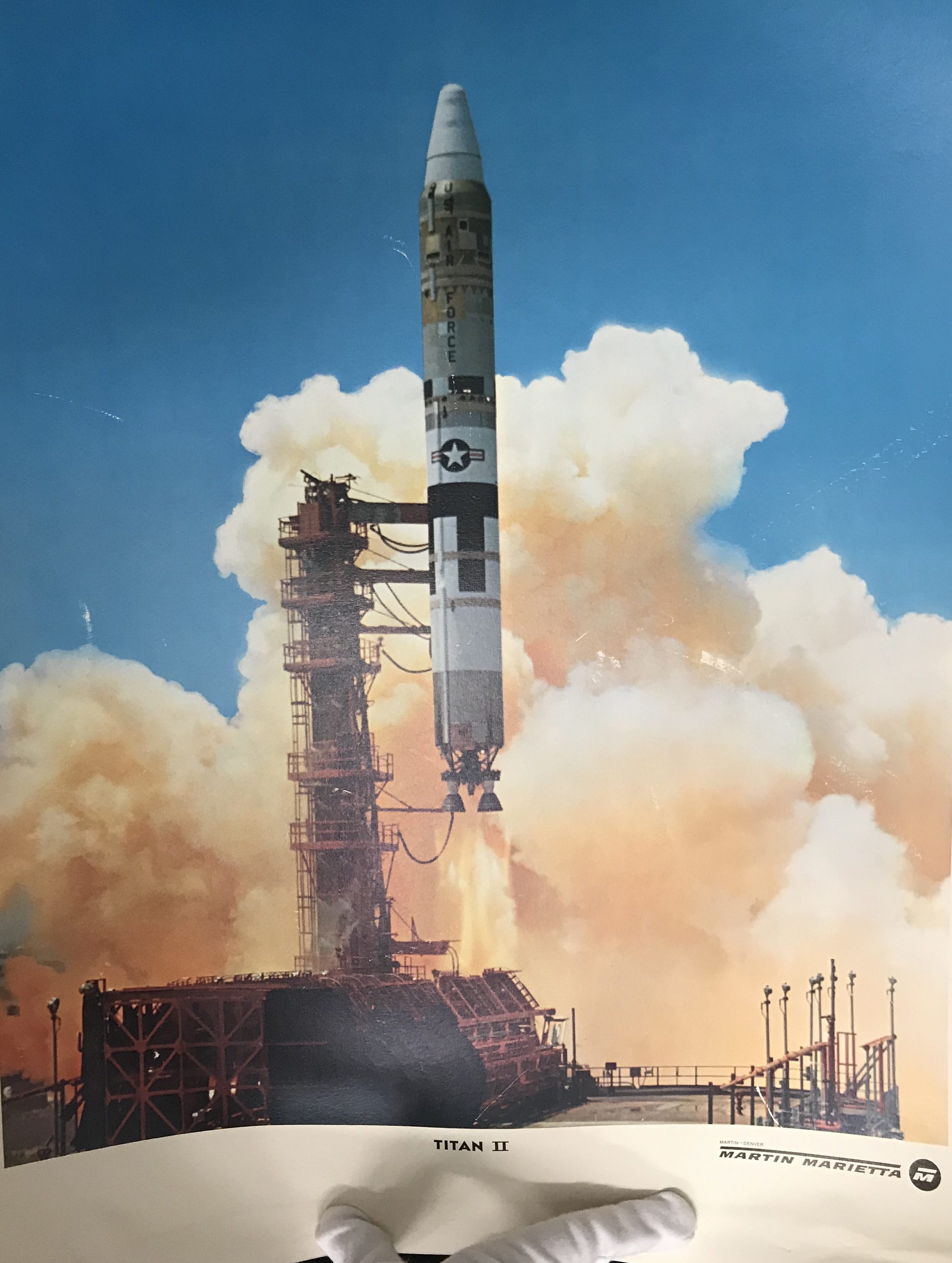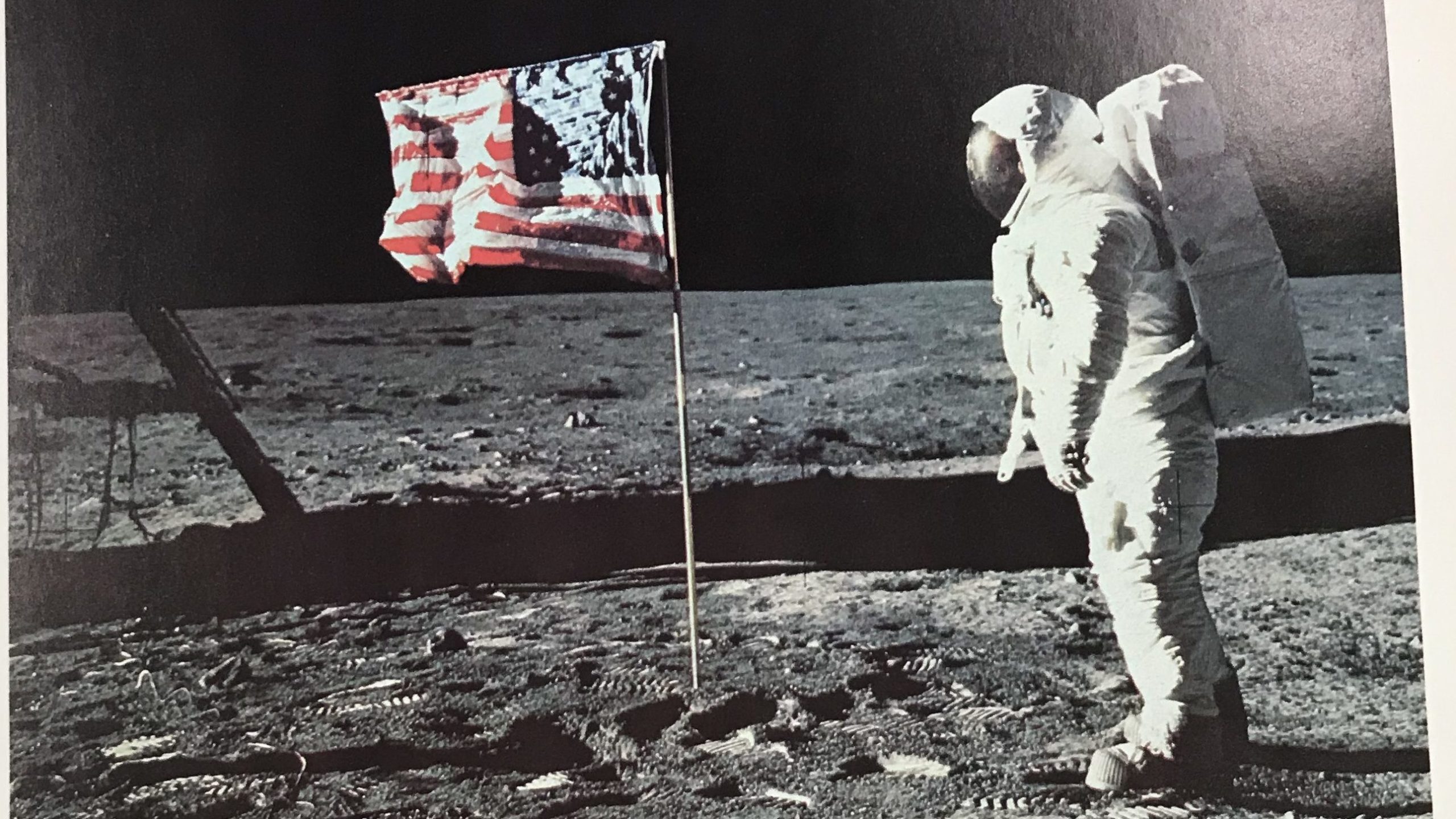Post written by staff members at Fort Collins Museum of Discovery.
Happy #MoonMonth!
“Your mission is ours.” This is the mission statement of Colorado company Lockheed Martin. In June, the Archive & Collections received a donation of 2D prints of aerospace technology that Lockheed Martin Denver assisted in building for NASA. Today, we’re sharing information on that donation as well as exploring Colorado’s connection to the Apollo 11 lunar landing, which took place 50 years.

Who is Lockheed Martin?
Lockheed Martin was formed in 1995 after a merger of Lockheed Corp. and Martin Marietta, which both had decades of aerospace experience behind them. (Martin Marietta was formed in 1961 in a merger of Glenn L. Martin Co. and American Marietta Corp.) The companies’ aircraft have set records and achieved milestones in aviation and space exploration. In fact, Lockheed Martin is the largest provider of IT services, systems integration and training to the U.S. Government.
Lockheed Corp.’s projects also included the Hubble Space Telescope, the Apollo launch escape system and the Corona surveillance satellite series. Martin Marietta was known for spacecraft such as the Viking Mars landers and the Magellan Venus spacecraft.
In aerospace, some of Lockheed Martin’s major projects today include the F-16 Fighting Falcon fighter plane, the C-130 Hercules military transport, the P3-Orion maritime patrol aircraft, and the F-22 Raptor stealth fighter (with Boeing), according to Encyclopedia Britannica. In space, Lockheed Martin is known for the Titan IV and Atlas launch vehicles and the Trident II submarine-based missile. Lockheed is also part of the joint venture International Launch Services, along with Russian companies Energia and Khrunichev.
The Apollo Project
Project Apollo was announced by NASA in 1960. Many companies were contracted to design and build parts of the Apollo spacecraft, including the Lockheed Propulsion Company. Lockheed Propulsion Company designed and built the solid propellant launch escape motor and the pitch control motor for the Apollo spacecraft. 50 years ago, Apollo 11 touched down on the Moon on July 20, 1969. The space race had been won, yet in many respects had only just begun.
Lockheed Martin’s contribution to the Apollo Project
Years later, on April 12, 1981, the space shuttle Columbia launched from Cape Canaveral, Florida, on its first official mission, beginning an era of manned spaceflight unlike any before or since. Columbia looked more like a sophisticated plane than the bubble-with-legs design of the Apollo moon landers. The space shuttle missions were also quite different. This was no race to the moon—this was to be sustained science and space exploration.

For decades, space shuttles were the symbol of space exploration and innovation, and they were fueled by an iconic burnt-orange external tank that was designed and built by Lockheed Martin.

The structural backbone of every shuttle takeoff, the tanks were the largest component of each shuttle at 154 feet in length—longer than the Statue of Liberty—and were composed of nearly a half-million parts. The external tank that launched Columbia’s first mission in 1981 weighed nearly 76,000 pounds, but by 1998 Lockheed Martin had developed the Super Lightweight Tank, lowering the weight of the external tank to approximately 58,500 pounds. This change in design and the shift to a lighter aluminum-lithium alloy made it possible for shuttles to carry greater payloads, a breakthrough that allowed the shuttle to deliver to orbit the construction modules that became the International Space Station.
Lockheed Martin & NASA Partnership Today
Today Lockheed Martin still partners with NASA. Currently, Lockheed Martin is working on the next generation of commercial supersonic aircraft to reduce a sonic boom. Lockheed Martin has designed X-59 to cruise at 55,000 feet at a speed of about 940 mph. On July 2, 2019, NASA will test Orion’s launch abort system. This test will verify the system can steer the crew module and carry astronauts to safety in case of an emergency during launch. Lockheed Martin has been the prime contractor building NASA’s Orion, the only spacecraft designed for long-duration, deep space human exploration.
Lockheed Martin & the Archive & Collections at FCMoD
Members of our Fort Collins Community have contributed to many space exploration projects over the years through their work at Lockheed Martin. One Fort Collins family had multiple generations working there, and the museum was thrilled when they donated models and prints documenting this work. Through this multi-generational family influence the museum is able to display some of aerospace’s greatest achievements in history. We’ll be displaying some of these prints in the Archive, as part of our exhibit commemorating #MoonMonth. The display will feature posters, photos, and more from the history of the lunar landing and will be on view until July 30, 2019. Visitors may view the exhibit during our open hours: Tuesday through Saturday from 10:00 am – 12:00 pm and 1:00 pm-5:00 pm.
3…2…1 BLAST OFF ? It’s #MoonMonth at FCMoD!

